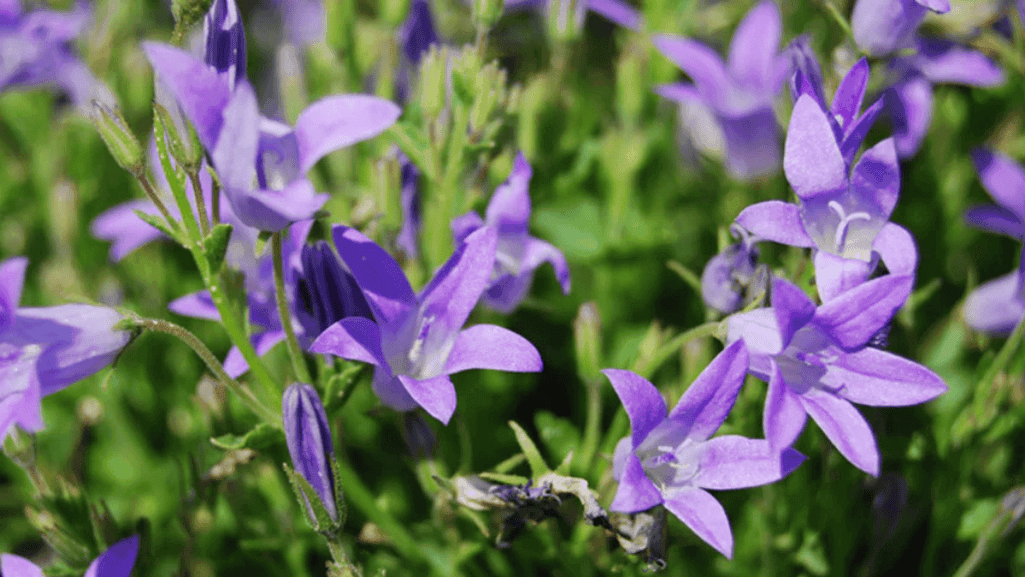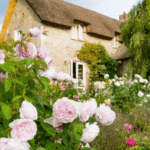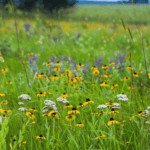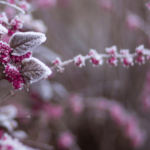
Beautiful flowers gardenia Plants For Your homes

Discover the genus campanula—a large, diverse group of plants that offers annuals, biennials, and perennials for borders, beds, and containers.
These plants bloom from late spring into summer and range from low rock-garden forms to tall cut-flowers. Many species suit sunny sites or light shade and prefer well-drained, neutral to slightly alkaline soil.
This guide helps you match bellflower varieties to site conditions, design goals, and maintenance levels. You’ll learn which types spread by rhizomes and which stay tidy in clumps, plus picks for meadows, formal beds, and small urban gardens.
Expect brief spotlights on signature species, color ranges from deep purples to crisp whites, and practical planting and care tips to keep flowers reliable and pollinators happy.
Across 300–500 species, campanula displays striking diversity in size, form, and bloom habit. Forms range from alpine cushions to tall border plants, so you can choose low mats for rock gardens or statuesque stems for cuts.
Flowering usually begins in late spring and continues into summer, supplying steady forage for bees, hoverflies, and butterflies. Many species set small capsules that can self-sow and naturalize modestly.
Culture is straightforward: humus-rich, well-drained soil and the right light make a big difference. In cool-summer areas give full sun; in warmer climates provide some afternoon shade to reduce stress.
Tip: Divide clumps every few years to renew vigor and match mature size to site to avoid overcrowding and keep a strong summer display.
Picking the right campanula for your yard starts with matching light, soil, and space to each species’ habit. Consider where blooms will show best and what maintenance you want.
Most plants do best in full sun to light shade and in humus-rich, well-drained, neutral to slightly alkaline soil. In warm-summer areas, plan for partial shade during peak heat to keep roots cool and flowers longer.
Match campanula species to use. Low C. carpatica and C. portenschlagiana suit rock gardens and containers. Taller C. lactiflora and C. medium belong in mixed beds and cutting gardens.
Combine species with staggered bloom times to keep color from late spring into summer and beyond while minimizing maintenance.
Low-growing campanula bring trailing color and tight habit to rock crevices and alpine beds. These small plants suit stone walls, raised troughs, and tight front-of-border spots where they spill or form tidy mounds.
Campanula poscharskyana forms fast-spreading mats with bluish-purple, star-shaped flowers that trail over stones and container rims. Cultivars like ‘Blue Waterfall’ cascade nicely, making them ideal for walls and hanging pots.
C. portenschlagiana blooms from late spring into early autumn with abundant violet clusters. Use it for edging, troughs, and groundcover where long-season color matters.
C. carpatica makes compact mounds covered in bell-shaped blooms. It shines in lean, well-drained rock settings and small containers where tidy growth is prized.
Tall campanulas add vertical drama and steady summer color at the back of borders. These species give layered structure, cut stems for bouquets, and attract pollinators when planted in fertile, well-drained beds.
Campanula lactiflora rises to 4–5 feet with lightly scented periwinkle panicles in midsummer. It makes a statuesque border star and works well with tall grasses or structural perennials.
Campanula persicifolia bears 2–3 inch bell-shaped flowers on stems around 3 feet tall. It provides a long bloom time through summer and is a reliable vertical accent in mixed beds.
Campanula pyramidalis can reach 5–6 feet and produces airy, starry-lavender spires. Use it as a focal backdrop or seasonal screen; staking helps in windy sites.
Canterbury bells are traditional biennials prized for cutting. Sow a new batch each year for continuous displays; popular series include single and double forms for abundant blooms.
Sheltered borders and shady paths can still glow with well-chosen campanula that thrive in dappled light. Many species naturally grow at woodland edges, so they handle filtered sun and cooler root zones.
Campanula lactiflora brings tall, airy sprays that bridge spring ephemerals and high-summer perennials in lightly shaded gardens.
In warm regions, partial shade preserves bloom quality and keeps foliage looking fresh. Maintain even moisture and add compost to mimic forest duff—humus-rich but well-drained soil supports steady growth.
Campanula poscharskyana and C. garganica form luminous mats at ground level. Use them to edge shady paths or brighten patio corners where low light limits other flowers.
A focused palette of inky violets and bright whites gives a garden instant clarity and rhythm. Use contrast to create depth and to draw attention to focal points.
For bold, dramatic color, choose deep purple options such as campanula glomerata, C. poscharskyana, and C. pyramidalis. The clustered heads of glomerata offer dense, showy groups that read well from paths and patios.
Place darker tones slightly forward or in brighter spots so they don’t visually sink. Try mixing in lighter lavenders to add subtle variation without losing intensity.
White forms like Campanula persicifolia ‘Alba’ lift nearby blooms and create luminous contrast. Whites can sit deeper in borders to reflect light and lead the eye through the bed.
For more inspiration on purple palettes, see a curated list of purple flower ideas to match hardscapes and planting schemes.
Late spring to summer blooms: planning continual color
Begin with a bloom calendar that layers species to deliver steady flowering from late spring into summer.
Choose a mix of early, mid, and late selections so beds stay filled. Low forms cover rock features while taller campanula fill cutting beds and back borders.
Plant in sunny to lightly shaded beds using well-drained, humus-rich soil for best continuity. Include the cultivar ‘Summertime Blues’ or similar extended-bloom selections to stretch the display.
Practical care: feed lightly with a slow-release organic option in spring and water deeply but infrequently to establish roots for longer flowering into summer. Record peak bloom dates for each species to refine future planting plans.
A handful of standout campanula show how texture and bloom form can define meadow and woodland plantings. Below are concise profiles to help place each plant by habit, height, and moisture need.
Clustered bellflower (Campanula glomerata): Bold terminal clusters of deep-violet blooms create strong summer impact. It can spread by rhizomes; selective deadheading encourages a second flush while containment or periodic division keeps its habit tidy.
Delicate, nodding bells on fine stems suit drier, lean soils and sunny meadows. Low-growing and airy, it pairs well with fine grasses to preserve movement and light.
Speckled, nodding bells add textural contrast. These spreaders benefit from space or root barriers; thin or divide to control vigor and keep foliage fresh.
A U.S. native for forest edges and shaded margins, this biennial reliably blooms in its second season. Use it for vertical accents and to bridge canterbury bells and lower perennials; many campanula species reach a few feet, so place taller stems to the back for layered effect.
Set your plants up to thrive by focusing on soil structure, planting depth, and consistent moisture. Proper prep reduces stress and speeds establishment in beds and containers.
Prepare beds by loosening soil and adding organic matter to improve drainage and nutrient hold.
Dig holes about twice the root-ball width, set the crown level with the surface, and backfill firmly to remove air pockets.
Mix a slow-release fertilizer into the backfill and water in thoroughly. In pots, use a drainage hole plus coarse shards or grit to avoid waterlogging.
Keep moisture even during dry time to support steady growth and long bloom. Deadhead after main flushes to prolong flower while leaving some stems to self-seed if desired.
Divide mature clumps every few years in cool weather to renew vigor and fuller spring display. Light feeds in spring help without encouraging floppy stems.
Perennials are usually hardy, but biennials like C. medium benefit from light winter cover such as conifer boughs.
Ensure crowns sit in well-drained soil so they do not remain wet and cold. For porch or indoor types like C. isophylla, give bright, indirect light and a permeable potting mix.
Understanding growth habit helps you enjoy bold blooms without losing control of the bed. A few species are vigorous in the right soil and climate, so plan for containment and easy maintenance.
Some campanula spread by rhizomes and can overrun nearby planting. Notable examples include campanula glomerata and C. punctata, which become assertive in fertile, well-drained sites.
Containment strategies: install root barriers, use strategic edging, or plant vigorous selections in large containers. Inspect new divisions and nursery stock for hidden runners before placing them near rock features or delicate beds.
Improving drainage and avoiding overly rich soil can also reduce rampant growth. Even assertive plants add value if managed from the start with clear boundaries.
Most bellflower species are not toxic to humans; the flowers are sometimes used decoratively and are considered edible for people.
However, avoid feeding blooms to pets and supervise children around unfamiliar plants. For low-maintenance settings, choose clump-forming selections to limit self-sowing and extra trimming.
Well-chosen campanula bring steady color and structure from late spring into the height of summer, delivering long-lasting blooms that please pollinators and people alike.
Across this genus, low mats and tall spires suit rockeries, borders, and containers. Match species to light, soil, and space to keep displays tidy and reliable in your garden.
Focus on drainage, even moisture, routine deadheading, and occasional division to sustain strong flowers and healthy growth. Protect biennials and crowns from wet winter soil.
Pair tall and low forms for layered interest and continuous time-of-season color. Try a few selections to learn what performs best in your microclimate, then expand with proven picks.
Use the species spotlights and planting checklist to finalize choices. With the right plant in the right place, bellflowers reward a yard with generous blooms year after year.




